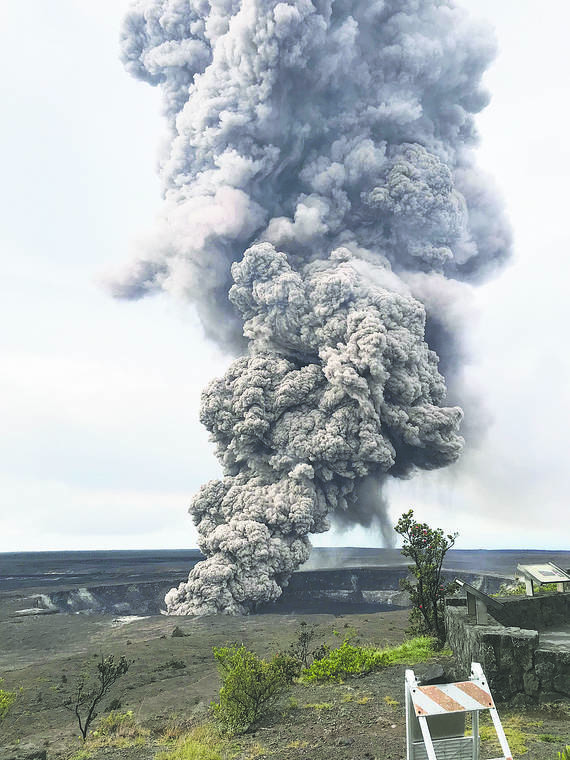The May 3, 2018, eruption of Kilauea volcano caused property damage worth $800 million and injured two dozen people —a catastrophe for the area, but nothing unusual for a volcanic event. But researchers now think there might be something extraordinary about the eruption, after all. Scientists at the University of Miami argue that record-breaking rainfall in preceding months may have helped trigger the blast.
The May 3, 2018, eruption of Kilauea volcano caused property damage worth $800 million and injured two dozen people —a catastrophe for the area, but nothing unusual for a volcanic event. But researchers now think there might be something extraordinary about the eruption, after all. Scientists at the University of Miami argue that record-breaking rainfall in preceding months may have helped trigger the blast.
Volcanic rocks in Hawaii are permeable, which makes it easy for rainfall to seep and increase groundwater levels quickly. The rapid increase creates pressure that can propagate for several kilometers underground. With enough rain, the stress could cause fractures in the rocks holding back volcanic lava, just as melting ice sheets have been shown to relieve pressure and trigger volcanoes in a similar fashion.
“A relationship between heavy rainfall and eruptive activity was recognized some time ago,” says Bill McGuire, professor of geophysical and climate hazards at University College London and author of Waking the Giant. But the University of Miami study, published today in Nature, is the first to quantify rainfall-induced seismic effects below the Earth’s surface. As the planet heats up, McGuire says, extreme rainfall events are likely to become more frequent, and bigger ice sheets will melt. Those events could trigger not just volcanoes, but also earthquakes and tsunamis.
The authors of the research can’t be certain rainfall was the cause of the Kilauea eruption, but the data are compelling. On April 14 and 15, the area near the volcano received nearly 50 inches of rain — more than what Hurricane Maria dumped on Puerto Rico in the same period of time, and comparable to the 60 inches of rain that fell on Houston over four days during Hurricane Harvey. In the weeks after, underground pressure increased to its highest level in almost 50 years. Collection of subsurface water and pressure data isn’t always part of volcano monitoring, but the study makes the case that it should be.
“The possibility that external processes initiate volcanic eruptions is a reminder that volcanoes are part of a dynamic Earth system,” Michael Manga, head of earth and planetary sciences at the University of California at Berkeley, wrote in a Nature essay that accompanies the study. “We are only just beginning to understand these interactions.”

Subscribe today for unlimited access.
Already a subscriber?
Login
Not ready to subscribe?
Register for limited access.
If you have a print subscription but require digital access,
activate your account.






